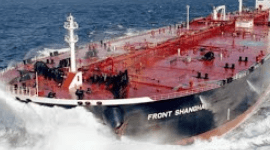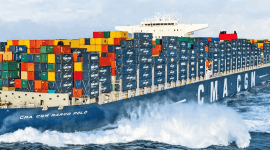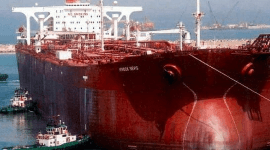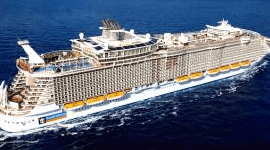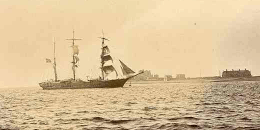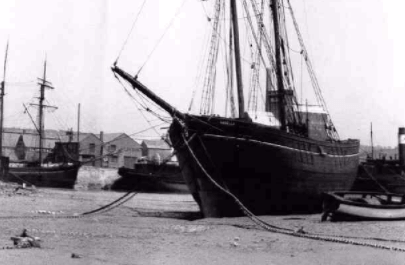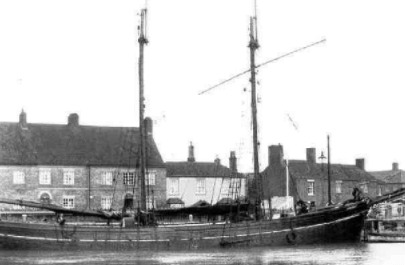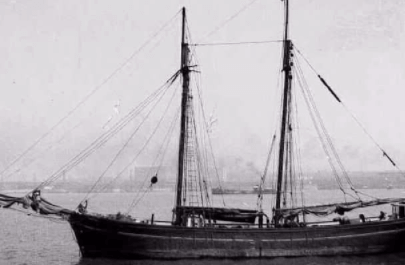Lifeboat Disasters and the wreck of the Mexico at Ainsdale, 1886
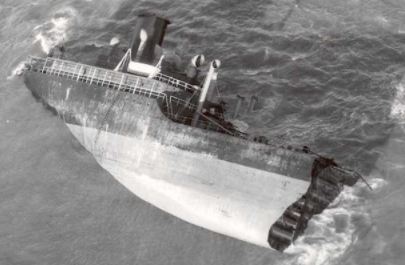
A distressing catastrophe occurred off the Lancashire coast early on Friday. It seems that during the gale which raged on Thursday a large barque, the Mexico, of Hamburg, from Liverpool to Guayaquil, was seeen to be at anchor in a dangerous position off Ainsdale. During the evening she dragged her anchors, and drove on the beach. The Southport lifeboat, Eliza Fernley, was launched about 11 o'clock, and manned by a crew of 16 hands, pulled gallantly through the raging sea in the direction of the wreck, which could be plainly seen by the lights of her signals. Two of her masts were gone, and her crew, lashed to various parts of the vessel, were shouting wildly for help. After a fierce battle with the wind and sea, the lifeboat was seen to get within about 20 yards of the wreck, and her success seemed assured. Just at this moment she fell off with the force of the wind, and before she could be brought up again a terrific sea struck her, and she was capsized, all the crew being thrown into the water. Instead of righting herself, as she ought to have done, she remained bottom upwards, and was blown onto the beach. Three of the crew managed to get hold of the upturned boat and drifted ashore with her in safety; but the other 13 were drowned, three of the bodies being found entangled under the boat when she touched the beach. The remaining ten bodies were washed ashore during the course of Friday morning. Of the 13 deceased 10 were married, and many of them have large families. The men saved were Henry Robinson, John Jackson, and John Ball. The last-named died on Friday night in the infirmary, thus making 14 deaths. The story of the disaster is told by John Jackson, one of the survivors, who resides in West-street, Southport. He says that the boat went nicely for a time, but their troubles soon commenced. Captain Hodge and Peters, the second coxswain, were at the helm, and sea after sea washed over the boat. They were beaten back several times, and shipped an immense quantity of water. It was pitch dark and the only indication of the distressed barque was the faint glimpse of a lamp which, as the boat got closer, they saw hung from the mizzen top. Jackson was just about letting go the anchor to get the boat alongside, the vessel being then, he should say, 20 yards from the barque, when a tremendous sea caught the boat right amidships, and she went over, remaining bottom upwards. Some of the crew managed to crawl out. He and Richard Robinson held firmly onto the row-locks and were buffeted about considerably. With some difficulty he got underneath the boat again and spoke, he thought, to Henry Robinson, Thomas Jackson, Timothy Rigby, and Peter Jackson. He called out, "I think she will never right - we have all to be drowned;" and heard a voice, probably Henry Robinson's, say, "I think so too." He got out again and found Richard Robinson fairly done. Robinson leaned heavily on his arm, and he thought he must have suffocated. Another heavy sea came, and Robinson disappeared with it and was never seen again. While underneath, Jackson called out to his brother, but could get no answer.
Subsequently it became known that a second lifeboat and her crew were lost in the heroic atempt to relieve the same vessel. The signals of distress from the Formby Sands were observed simultaneously from three stations, and three lifeboats put out to the assistance of the vessel. The Lytham boat, the Charles Biggs, although farthest away, reached the wreck first, and rescued the crew, 12 in number, of the vessel. The third lifeboat, Laura Janet, put out from St.Anne's, and as she did not return on Thursday night the gravest fears were felt for her safety. These apprehensions were realised on Friday morning, when the ill-fated boat was discovered at Ainsdale, bottom upward. During the day the bodies of several of her crew were washed up. The Laura Janet was in charge of Coxswain Johnson. The boat had to face a wild head wind and a most tempestuous sea. It was seen capsized between the Mexico and the wreck of the ship Nereus, which had been on the banks for some time. No doubt is entertained that the whole of the crew, 14 in number, have perished, making the total loss of life 28. The rescued crew of the Mexico are now well. The names of those who went out in the ill-fated Laura Janet are William Johnson, coxswain, single; Charles Tims, mate, leaves a widow and five children; James Dobson, single; James Bonney, leaves a widow and three children; Nicholas Parkinson, single; John Wignall, single; Thomas Bonney, leaves a widow and five children; Richard Fisher, leaves a widow and five children; and another.
Yesterday, the inquest was opened at Southport, and was attended by the local agents of the National Lifeboat Institution and a special representative from the London office. As the majority of the victims were married men with families, a special effort will have to be made to provide for the widows and orphans. The Mayor of Southport has opened a subscription list, heading it with £100. One thousand pounds have already been subscribed in Southport alone.
On Friday an inquest was held at Taibach, near Cardiff, on the bodies of three of the crew of the barque Earlscourt, owned by Messrs. Kidd and Fleming, of Liverpool, which left Newport (Mon.) on the 4th with a cargo of iron bound for Albany, West Australia. After the vessel had got about 30 miles below Lundy Island the tug left her, and she made sail. Encountering very heavy and adverse winds, however, she was driven back towards the Glamorganshire coast, and on Wednesday afternoon, after beating about the channel for many hours in a perfect hurricane, the captain (Frampton), decided to beach her. She was run ashore about nine at night, and then commenced a terrible experience for the crew. They all took to the rigging, and lashed themselves to prevent their being washed overboard. The first mate, named Pollock, of Liverpool, became delirious, and attempted to cut away the ropes with which he was lashed. Some of his comrades tried to prevent him doing this, whereupon he turned and attacked them. He then succeeded in getting free from his bonds, and threw himself upon the deck, falling head first. His body was instantly washed out to sea. Three others quickly succumbed - the steward, T.A.Davies, of Guernsey, and apprentice named Hatt, from London, and a cabin boy, named Littlejohn, of Newport. The apprentice Hatt, who is a stepson of a London architect, died in the arms of the second mate, who was powerless to aid him. The other two met death while lashed to the rigging. At eight the next morning (Thursday) the survivors managed to crawl ashore, where they obtained shelter.
It is understood that the Board of Trade have ordered an official inquiry into the recent casulaties, and the Royal National Lifeboat Institution will be invited to co-operate.
Upto Friday afternoon the Royal National Lifeboat Institution had received information that no fewer than 118 lives had been saved by their boats during recent storms.
